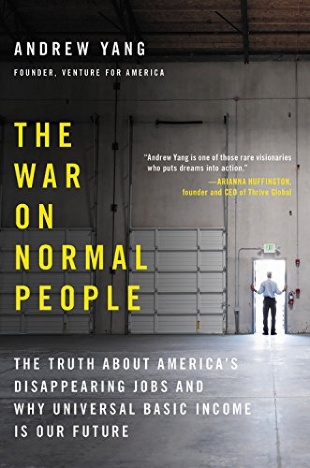"The replacement of drivers will be one of the most dramatic, visible battlegrounds between automation and the human worker. Companies can eliminate the jobs of call center workers, retail clerks, fast food workers, and the like with minimal violence and fuss. Truck drivers will be different.
"Right now, the federal government has said that it will allow autonomous vehicles in any states that permit them. One industry report noted that 'the (U.S.) Department of Transportation is throwing its full support behind development of autonomous vehicles as a way to improve safety on our roadways.' In 2016 the trucking industry spent $9.1 million on lobbying, and the Ohio government has already committed $15 million to set up a 35-mile stretch of highway outside of Columbus for testing self-driving trucks. Arizona, California, and Nevada have begun allowing self-driving car trials in their states, and others will follow.
"Will truckers and the industry fight back? Back in the 1950s, truckers were highly unionized, with the Teamsters being legendary in their aggressiveness. Today, only about 13 percent of U.S. truckers are unionized, and 90 percent of the trucking industry is made up of small businesses with 10 or fewer trucks. About 10 percent of truck drivers — 350,000 — are solo owner operators who own their own trucks; the trucking companies have been pushing drivers to buy or lease their own trucks to reduce overhead.
"It will happen in stages. First, there will be automated trucks with a human driver as a failsafe. The technology will allow truckers to go beyond their current 11 hours per day on the road as the driver will be able to rest and do other things during long stretches. This will increase the productivity of trucks and equipment, and likely the reduction in wages of truckers as the pay scale changes. The next stage will have convoys of trucks with the lead truck having a driver and the others following automatically, which lowers wind resistance and fuel costs. There will be docking stations outside urban areas where drivers will enter the trucks for the last 10 miles.
"At some point, as the industry becomes more and more automated, truck drivers will realize that the combination of much more efficient trips and lower need for labor will dramatically shrink their total employment. Those who have other options will flee the field. But for many, their opportunities outside of truck driving will be minimal, and they know it. Many are ex-military — about 5 percent of Gulf War veterans — 80,000 — worked in transportation in 2012. They will be proud and desperate. What might happen when the 350,000 American truckers who bought or leased their own trucks are unemployed and angry? All it takes is one out of 350,000 to lead the others. It doesn’t take a big leap of the imagination to imagine mass protests that could block highways, seize up the economy, and wreak havoc.
"The best estimates for when this will unfold are between 2020 and 2030. This is right around the corner."
